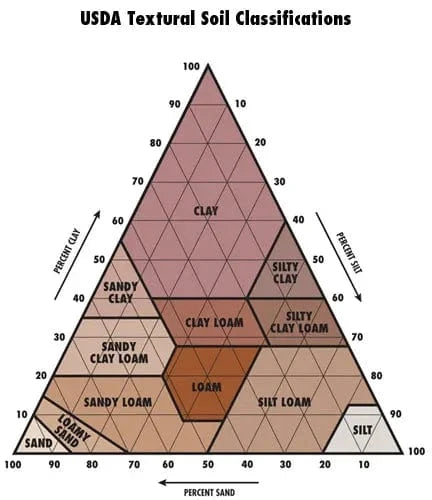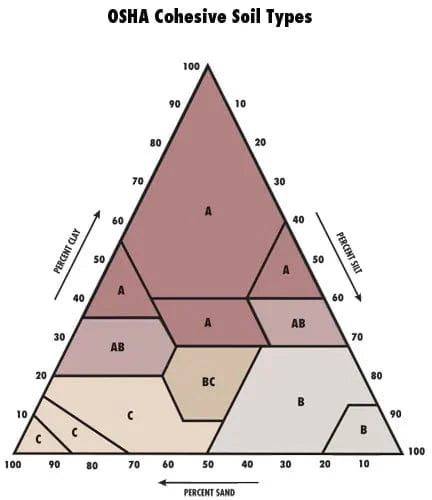Soil Characteristics
Soil Classifications
We often get asked the question: “Will AirSpade work effectively on my job site?” The answer largely depends upon the type of soil present. Although hundreds of different types of soils exist, the Occupational Health & Safety Administration (OSHA) classifies soils into four general categories (in decreasing order of strength):
- Stable Rock
- Cohesive Soil Type A
- Cohesive Soil Type B
- Cohesive Soil Type C
Relative strengths of these four soil classifications are measured using the metric Unconfined Compressive Strength expressed in tons per square foot. Data on these soils is contained within the following three tables:
POPULAR PRODUCTS
LEARN MORE ABOUT AIRSPADE
Compressed Air Requirements
All AirSpade nozzles are designed to operate optimally at 90 psi...
AirSpade Supersonic Nozzle
Supersonic nozzle turns compressed air into a high-speed, laser-like jet...
Benefits of Air Excavation
Air excavation has become a preferred method for digging on many jobs...
Digging with AirSpade
AirSpade is effective in virtually all soils and even hard clays...
Stable Rock
|
||
|---|---|---|
| Rock Type | Unconfined Compressive Strength (tons/sq ft) | |
| Minimum | Maximum | |
| Schist | 84 | 1,729 |
| Sandstone | 104 | 2,455 |
| Shale | 358 | 2,412 |
| Limestone | 369 | 3,894 |
| Granite | 505 | 3,383 |
| Gneiss | 882 | 2,620 |
Cohesive Soils
|
||
|---|---|---|
OSHA Cohesive |
Soil Description | Unconfined Compressive Strength (tons/sq ft) |
A |
Clay, silty clay, sandy clay, clay loam, caliche, hardpan Some silty clay loam, sandy clay loam |
≥1.5 |
B |
Granular cohesive soils such as angular gravel, silt, silt loam, sandy loam Some silty clay loam, sandy clay loam |
0.5 - 1.5 |
C |
Granula soils such as gravel, sand, loamy sand, submerged soil Soil from which water is freely seeping |
≤0.5 |
Clays
|
||
|---|---|---|
Consistency |
Unconfined Compressive Strength (tons/sq ft) |
|
Very Soft |
0 - 0.25 | |
Soft |
0.25 - 0.5 | |
Medium |
0.5 - 1 | |
Stiff |
1 - 2 | |
Very Stiff |
2 - 4 | |
Hard |
>4 | |
Soil Textures
OSHA Cohesive Soil Types (A, B, or C) can be identified by the texture of a given soil. Shown below on the left is the U.S. Department of Agriculture Texturl Soil Classification Chart. This chart plots soil composition as a percentage of sand, silt, and clay and classifies each unique combination. The chart on the right contains the same information with OSHA Cohesive Soil Types superimposed.


In summary, understanding the soils at a given jobsite is the key to determining the effectiveness of digging with AirSpade.
